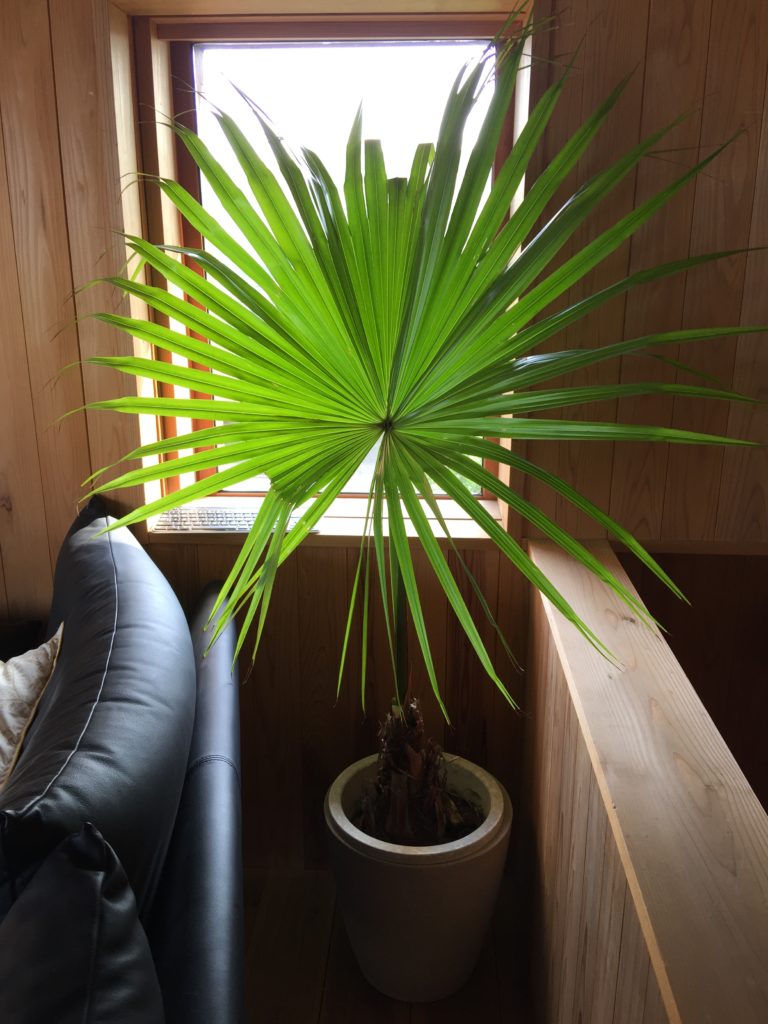Mules Kicking Up a Storm たくましいミュールヤシ
 These Butyagrus seeds are sprouting energetically, with many pushing two roots out (meaning, two plants from the same seed). These were raised in sphagnum moss, and took about 3 months to germinate. These cross-breeds are essentially unknown in Japan, and have only become popular among palm enthusiasts in the past decade. They are popular because the combine the best traits of two hardy species: Butia, which grows all over south and central Japan, particularly along the coasts, and laughs in the face of cold weather, and Syagrus, or Queen Palm, which is tall and graceful and fast-growing.
These Butyagrus seeds are sprouting energetically, with many pushing two roots out (meaning, two plants from the same seed). These were raised in sphagnum moss, and took about 3 months to germinate. These cross-breeds are essentially unknown in Japan, and have only become popular among palm enthusiasts in the past decade. They are popular because the combine the best traits of two hardy species: Butia, which grows all over south and central Japan, particularly along the coasts, and laughs in the face of cold weather, and Syagrus, or Queen Palm, which is tall and graceful and fast-growing.
ミュールヤシの種が2つの根を押し出しながら、エネルギッシュに発芽しています。多くの種から根が2つ出ますが、これはつまり1つの種から2つの苗木が育つということです。種はミズゴケの中で栽培し、約3か月で発芽します。この交配種は本来日本では知られていませんでしたが、過去10年ほどの間にヤシ愛好家の間で人気が出てきました。人気の理由は丈夫な二種のそれぞれ最良の特性を交配したことによります。この二種のうちのひとつがヤタイヤシで、日本の南部から中央部にかけて特に沿岸地域に成長し、寒い気候も物ともしません。もう一方のジョオウヤシは、背が高く優雅で成長が早いです。
A mule gives you then, a tall, graceful, fast-growing palm that doesn’t mind the cold. I can’t think of a better palm solution for mainland Japan. My US seller specializes in Mules, so I’m looking forward to their fast, hearty growth in my region of coastal Japan.
結果としてミュールヤシは、耐寒性があり、高木、優雅、速生育という特徴を持つヤシになりした。本州で育てるヤシとして、これ以上最適のヤシを思いつくことはできません。米国の販売パートナーはミュールヤシを専門に扱っていますが、ここ日本の沿岸地方でも同様にミュールヤシがすくすくと元気に成長するのが楽しみです。







